

Mobile-First B2B Strategy: 10 Powerful Tips for Impact!
Master the art of a mobile-first B2B strategy! Learn how to optimize your web development for maximum impact and user engagement!
In today’s digital world, a mobile-first approach is not an option; it is a requirement for B2B web development. Considering that the bulk of users access their content via mobile devices, mobile optimization has to be shifted to overdrive if one intends to keep competitive. This enables an improved user experience and provides higher engagement for better conversions, eventually leading to success in the core audience.
A mobile-first strategy is a design focused on mobile users right from the beginning. By recognizing specific behaviors and expectations, you’ll be better equipped to create experiences targeting them in meaningful ways that drive conversions. This blog will walk you through the elements that comprise a mobile-first B2B strategy, ensuring your web development efforts are on par with industry best practices for optimal performance and user satisfaction.
What is a Mobile-First Strategy?
A mobile-first strategy is a design philosophy that prioritizes the mobile user experience in web development. This approach emphasizes creating a seamless and efficient experience for users accessing websites or applications on their mobile devices before adapting to larger screens, such as tablets and desktops. As mobile usage continues to surge, adopting a mobile-first B2B strategy has become vital for businesses looking to connect effectively with their audience. By focusing on mobile users first, companies can better address their specific needs, behaviors, and preferences, ultimately leading to improved user engagement and satisfaction.
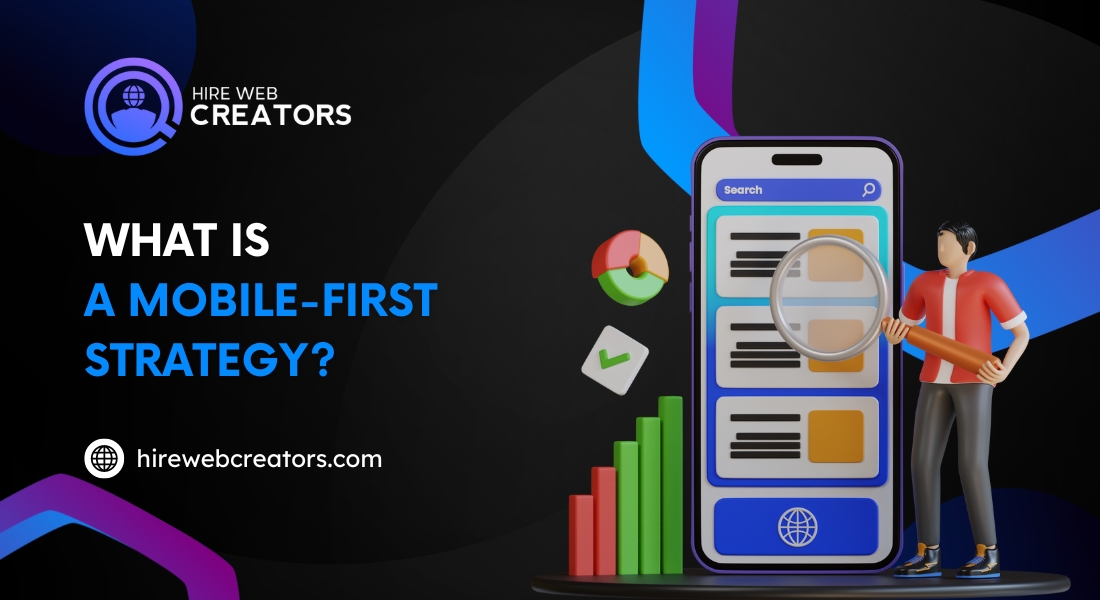
Implementing a mobile-first B2B strategy involves several key principles and practices. Firstly, it’s crucial to streamline the design by minimizing unnecessary elements that can clutter the mobile interface. This often means prioritizing essential content and features, ensuring that users can quickly access the information they need without distractions. Additionally, responsive design techniques are employed to ensure that the website adapts fluidly to various screen sizes. By doing this, businesses can enhance usability and accessibility across devices, making it easier for potential customers to navigate their content and take desired actions.
To create an effective mobile-first strategy, consider the following aspects:
- User Experience (UX): Focus on creating intuitive navigation, fast loading times, and touch-friendly interfaces to enhance user interaction.
- Content Prioritization: Highlight the most relevant information for mobile users, ensuring that it is concise and easily digestible.
- Testing and Optimization: Regularly test the mobile site to identify and address any usability issues, ensuring that it remains optimized for the best performance.
Why is Mobile-First Important for B2B Development?
A mobile-first B2B strategy is essential for B2B development because it aligns with the current consumer behavior trends, where mobile devices are increasingly becoming the primary means of accessing online content. Businesses must recognize that a significant percentage of their target audience is utilizing smartphones and tablets for research, communication, and transactions. By adopting a mobile-first B2B strategy, companies can effectively meet their customers where they are, leading to improved engagement and conversion rates.
User experience plays a critical role in the success of B2B websites. A mobile-first B2B strategy enhances user experience by ensuring that the website is responsive, fast-loading, and easy to navigate on smaller screens. When users encounter a mobile-friendly site, they are more likely to stay engaged, explore content, and take action, whether it’s filling out a contact form, requesting a quote, or making a purchase. The importance of providing a seamless mobile experience cannot be overstated, as a negative experience can lead to high bounce rates and lost opportunities.
Consider these benefits of implementing a mobile-first B2B strategy:
- Improved SEO Rankings: Search engines prioritize mobile-friendly sites in their rankings. By adopting a mobile-first B2B strategy, businesses can enhance their visibility in search results.
- Enhanced Brand Perception: A responsive and user-friendly mobile site fosters a positive impression of your brand, reinforcing credibility and trust with potential clients.
- Increased Conversion Rates: A mobile-first B2B strategy simplifies the user journey, making it easier for visitors to complete desired actions, ultimately boosting conversion rates.
Implementing a mobile-first B2B strategy is not just a trend but a necessity in today’s digital landscape. By focusing on mobile-first design principles, companies can create a more effective online presence, improve customer satisfaction, and ultimately drive business growth. Adopting a mobile-first B2B strategy today will ensure that your organization remains competitive and relevant in an increasingly mobile-centric world.
How to Assess Current Mobile Usage in Your Target Audience?
Understanding the mobile usage patterns of your target audience is crucial when implementing a mobile-first B2B strategy. By assessing how your customers interact with mobile devices, you can tailor your web development efforts to meet their specific needs. Begin by analyzing data from your existing website analytics to identify the percentage of visitors accessing your site via mobile devices. This information provides insight into user behavior, allowing you to make informed decisions about prioritizing mobile features and content.
Surveys and customer feedback are effective tools for gaining deeper insights into mobile usage. Reach out to your audience through email campaigns or social media to gather information about their mobile preferences and challenges. Questions may include how often they use mobile devices for business-related tasks, their preferred mobile apps, and any difficulties they encounter when accessing your website on their phones. By collecting this data, you can develop a more comprehensive understanding of your audience’s mobile habits, helping to shape your mobile-first B2B strategy.
Key considerations for assessing mobile usage include:
- Device Types: Identify the devices most commonly used by your audience, such as smartphones or tablets, and optimize your website accordingly.
- User Demographics: Analyze the demographics of your mobile users to understand their preferences, behaviors, and expectations.
- Traffic Sources: Determine how users are finding your site, whether through search engines, social media, or direct visits, to tailor your marketing efforts effectively.
What are the Key Elements of a Mobile-First Design?
Creating an effective mobile-first design involves focusing on essential elements that enhance user experience and engagement. A mobile-first B2B strategy requires a streamlined approach, where the design is optimized for smaller screens before adapting for larger devices. This includes prioritizing content, optimizing navigation, and ensuring fast loading times to provide users with a seamless experience from the moment they land on your site.
One of the key elements of mobile-first design is simplicity. A clean and uncluttered layout allows users to focus on the most important content without distractions. This means limiting the number of elements on a page and ensuring that essential information is easily accessible. Additionally, mobile-first design should prioritize touch-friendly interactions, with larger buttons and intuitive gestures that make it easy for users to navigate and engage with your content.
Consider these critical aspects of mobile-first design:
- Responsive Design: Ensure that your website adapts to different screen sizes, providing an optimal experience on smartphones, tablets, and desktops.
- Fast Loading Times: Optimize images, leverage caching, and minimize code to enhance loading speeds, as users are more likely to abandon sites that take too long to load.
- Clear Call-to-Action: Strategically place clear and compelling calls-to-action that encourage users to take desired actions, such as signing up for a newsletter or requesting a demo.
How to Optimize Content for Mobile Devices?
Optimizing content for mobile devices is a critical component of a successful mobile-first B2B strategy. Mobile users often seek quick and digestible information, so tailoring your content to fit their needs is essential. Begin by breaking down complex topics into concise, easy-to-read sections that facilitate scanning. Use clear headings, bullet points, and short paragraphs to enhance readability and ensure that your key messages stand out.
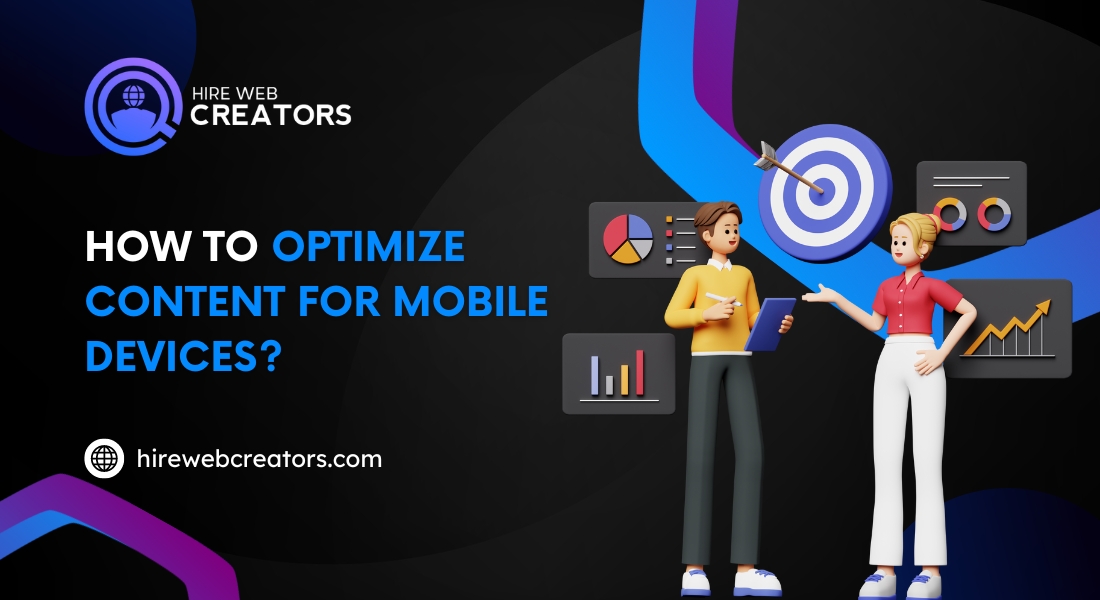
Visual content also plays a significant role in optimizing mobile content. High-quality images and videos can engage users, but it’s important to balance visuals with loading speed. Optimize images for mobile devices by compressing files without sacrificing quality, ensuring that they load quickly while still providing value to users. Additionally, consider using responsive images that adjust to different screen sizes, enhancing the overall user experience.
Key strategies for optimizing content for mobile include:
- Mobile-Friendly Formatting: Use larger fonts and adequate spacing to ensure that text is legible on small screens, preventing users from having to zoom in to read.
- Concise Messaging: Keep content straightforward and to the point, focusing on the most relevant information that addresses user needs and interests.
- Engaging Multimedia: Incorporate interactive elements, such as videos or infographics, to provide an engaging experience while ensuring that they are optimized for mobile viewing.
What Role Does User Experience Play in Mobile Strategy?
User experience (UX) is a cornerstone of any successful mobile-first B2B strategy. A positive UX directly impacts user engagement, satisfaction, and conversion rates, making it imperative for businesses to prioritize mobile design that enhances usability. By understanding the needs and behaviors of mobile users, companies can create a seamless and enjoyable experience that encourages visitors to explore their offerings and take action.
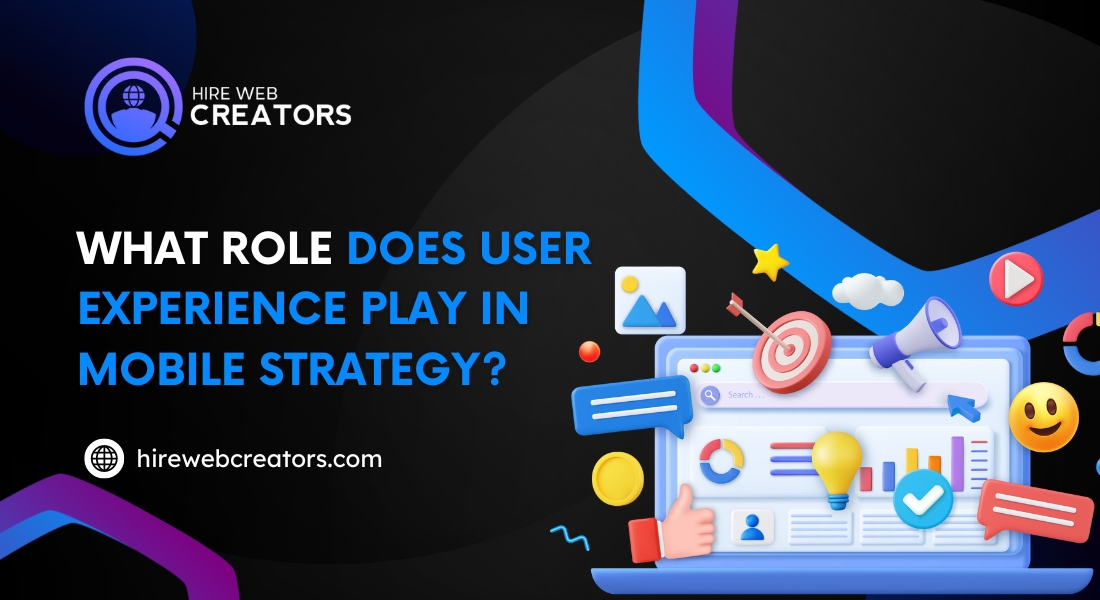
Designing for mobile UX involves creating intuitive navigation and ensuring that users can easily find the information they seek. Mobile users often browse quickly and may abandon sites that are difficult to navigate or require excessive scrolling. Implementing a simple, logical structure allows users to locate essential content effortlessly, leading to increased time spent on the site and improved engagement metrics. Additionally, incorporating touch-friendly elements, such as larger buttons and swipe gestures, further enhances the mobile experience.
Key factors influencing user experience in a mobile strategy include:
- Accessibility: Ensure that your mobile site is accessible to users with disabilities by incorporating features such as alt text for images and keyboard navigation.
- Feedback Mechanisms: Implement feedback options, such as surveys or chatbots, to gather insights on user satisfaction and identify areas for improvement.
- Consistency Across Devices: Maintain a consistent user experience across all devices, ensuring that users can transition seamlessly between mobile and desktop platforms without losing functionality.
How to Leverage Mobile Analytics for Continuous Improvement?
Leveraging mobile analytics is essential for refining and enhancing your mobile-first B2B strategy. By analyzing user behavior and interactions on mobile devices, businesses can gain valuable insights that inform ongoing improvements. Start by implementing analytics tools that track key metrics, such as user engagement, conversion rates, and drop-off points. This data will help you understand how users navigate your mobile site and identify areas that require optimization.
One effective approach is to set up specific goals within your analytics platform to track the performance of your mobile site. This includes measuring actions like form submissions, downloads, or purchases. By monitoring these goals, you can assess the effectiveness of your mobile-first strategy and determine whether it aligns with your business objectives. Analyzing user flow will also provide insights into common pathways taken by visitors, helping you identify potential obstacles that may hinder conversions.
Consider these strategies for leveraging mobile analytics:
- A/B Testing: Conduct A/B tests on different design elements, content layouts, and call-to-action placements to determine which versions resonate best with mobile users.
- User Segmentation: Segment your audience based on behavior, demographics, and device type to gain deeper insights into how different groups interact with your mobile site.
- Regular Reporting: Create regular reports to track performance trends over time, allowing you to adapt your mobile strategy based on data-driven insights.
What Technologies Support a Mobile-First Approach?
The implementation of a mobile-first B2B strategy is greatly influenced by the technologies utilized in web development. These technologies provide the foundation for creating responsive and engaging mobile experiences that cater to the needs of users on various devices. When building a mobile-first website, it is essential to leverage the right tools and frameworks that support optimal performance and usability, ensuring that your site meets the expectations of modern users.
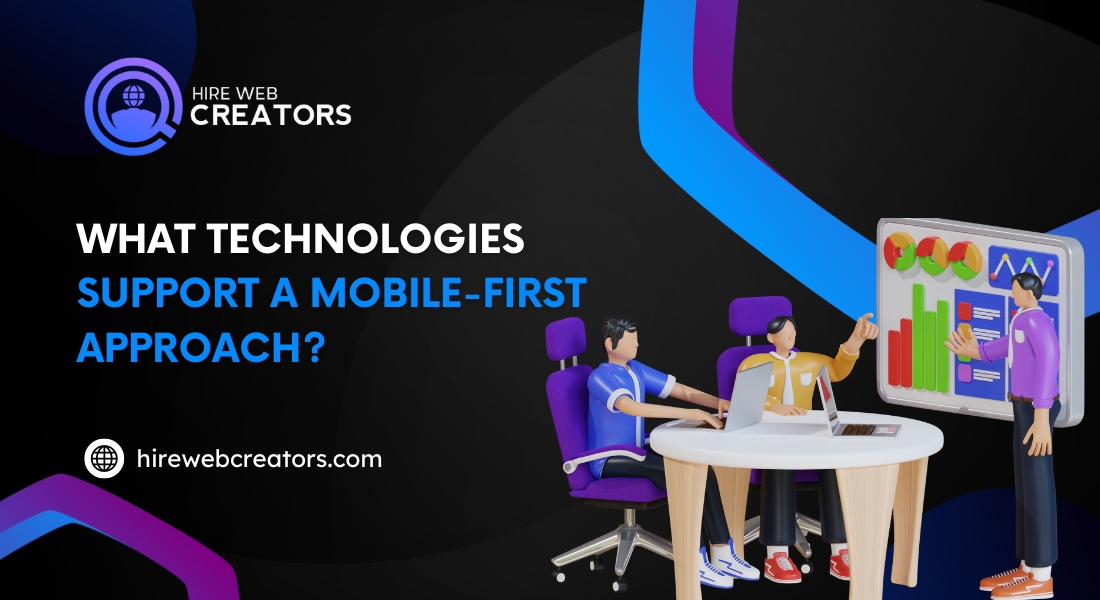
One critical technology is responsive web design (RWD), which allows a website to adapt seamlessly to different screen sizes. This technique employs flexible grids, layouts, and images to ensure that content is displayed appropriately on both mobile and desktop devices. Utilizing CSS media queries is vital for defining breakpoints at which the layout should change, optimizing user experience regardless of the device used. Furthermore, frameworks such as Bootstrap or Foundation offer pre-designed components that can accelerate the development of responsive sites, saving time and resources.
Other technologies that enhance a mobile-first approach include:
- Progressive Web Apps (PWAs): PWAs combine the best of web and mobile applications, providing users with a native app-like experience while being accessible via a web browser. They can work offline and send push notifications, improving user engagement.
- Accelerated Mobile Pages (AMP): AMP is an open-source initiative that allows businesses to create fast-loading web pages for mobile devices. By adhering to AMP guidelines, companies can enhance their page speed, leading to better user retention and satisfaction.
- Mobile-Optimized Content Management Systems (CMS): Many modern CMS platforms, such as WordPress and Drupal, offer mobile-first templates and plugins that simplify the process of creating responsive content without extensive coding knowledge.
How to Integrate Mobile Marketing with B2B Strategies?
Integrating mobile marketing into your mobile-first B2B strategy is essential for reaching and engaging your target audience effectively. As more consumers turn to mobile devices for information and decision-making, it is crucial to align your marketing efforts with this shift. A mobile-first B2B strategy should encompass various tactics that leverage mobile technology to enhance communication, build relationships, and drive conversions.
One effective approach is to optimize your website and content for mobile devices as part of your mobile-first B2B strategy. Ensure that your mobile site is user-friendly, fast-loading, and designed with mobile users in mind. This involves creating content that is concise, engaging, and easily scannable, allowing users to quickly find the information they seek. Additionally, consider incorporating mobile-friendly features, such as click-to-call buttons, location-based services, and mobile forms, to facilitate interactions and encourage conversions within your mobile-first B2B strategy.
Key tactics for integrating mobile marketing include:
SMS Marketing: Utilize text message campaigns to reach your audience directly, providing them with timely information, promotions, and updates. SMS marketing has high open rates and can drive immediate engagement, making it a vital component of your mobile-first B2B strategy.
Social Media Advertising: Leverage mobile-friendly social media platforms to promote your brand and content. Create visually appealing ads that resonate with your target audience and encourage engagement, reinforcing your mobile-first B2B strategy.
Email Marketing Optimization: Ensure that your email campaigns are mobile-responsive. Many users check their emails on mobile devices, so crafting visually appealing and easily navigable emails is crucial for success in your mobile-first B2B strategy.
What Are the Challenges of Implementing a Mobile-First Strategy?
While adopting a mobile-first B2B strategy offers numerous advantages, it also comes with its own set of challenges. Businesses must be aware of these potential obstacles to develop effective solutions and ensure a successful implementation. One significant challenge is the need for a cultural shift within the organization, as teams may need to adapt their mindsets and processes to prioritize mobile experiences.
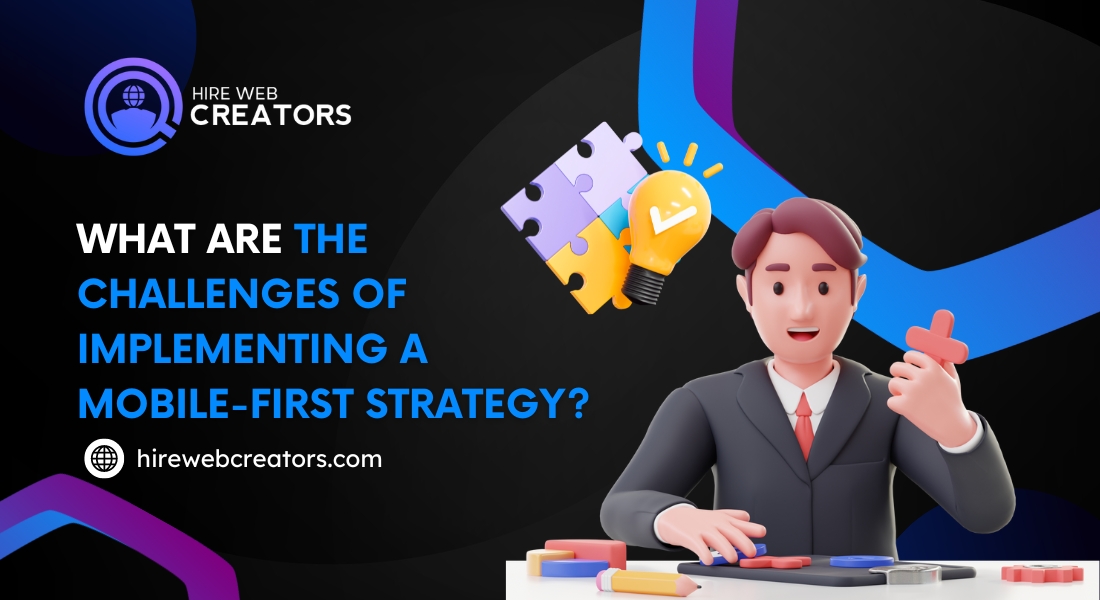
Another challenge lies in the technical aspects of developing a mobile-first site. Ensuring that your website is fully responsive across various devices and browsers requires extensive testing and optimization. Compatibility issues can arise, leading to discrepancies in user experience. Moreover, creating a mobile-friendly design may necessitate a redesign of existing content, which can be time-consuming and resource-intensive.
Consider these common challenges when implementing a mobile-first strategy:
- Balancing Performance and Design: Achieving a visually appealing design while maintaining fast loading times can be difficult. Developers must find ways to optimize images and minimize code without sacrificing aesthetics.
- User Experience Consistency: Maintaining a consistent user experience across mobile and desktop platforms can be challenging. Users expect similar functionality and design elements regardless of the device they use, necessitating thorough planning and execution.
- Keeping Up with Technology Trends: The rapid pace of technological advancements can make it challenging for businesses to stay ahead of mobile trends. Companies must be proactive in monitoring industry changes to ensure their mobile-first strategies remain effective.
How to Measure the Success of Your Mobile-First Strategy?
Measuring the success of your mobile-first B2B strategy is essential for determining its effectiveness and identifying areas for improvement. By utilizing analytics and performance metrics, businesses can gain insights into user behavior and engagement levels. Start by setting clear goals and key performance indicators (KPIs) that align with your overall business objectives. This may include metrics such as conversion rates, user retention, and bounce rates, which provide a comprehensive view of your mobile-first B2B strategy’s performance.
One critical aspect of measuring success is analyzing user engagement. Tools like Google Analytics can help track metrics such as page views, average session duration, and user demographics. By understanding how users interact with your mobile site, you can identify trends and patterns that inform future optimization efforts. Additionally, monitoring user feedback through surveys and reviews provides qualitative insights that complement quantitative data, allowing you to better understand user satisfaction and areas for enhancement in your mobile-first B2B strategy.
Key performance metrics to consider in your mobile-first B2B strategy include:
- Conversion Rate: Measure the percentage of mobile visitors who complete desired actions, such as making a purchase or signing up for a newsletter. This is a crucial metric for evaluating your mobile-first B2B strategy.
- Bounce Rate: Analyze the percentage of users who leave your site after viewing only one page. A high bounce rate may indicate that your mobile-first B2B strategy needs improvement to retain users.
- User Retention: Track the percentage of users who return to your mobile site within a specific timeframe. High retention rates suggest that your content and user experience resonate with your audience, highlighting the success of your mobile-first B2B strategy.
What Are Future Trends in Mobile B2B Development?
As technology continues to evolve, staying informed about future trends in mobile B2B development is essential for maintaining a competitive edge. Adopting a mobile-first strategy involves anticipating changes and incorporating innovative solutions that enhance user experience. Several key trends are shaping the future of mobile development, offering opportunities for businesses to improve engagement and drive growth.
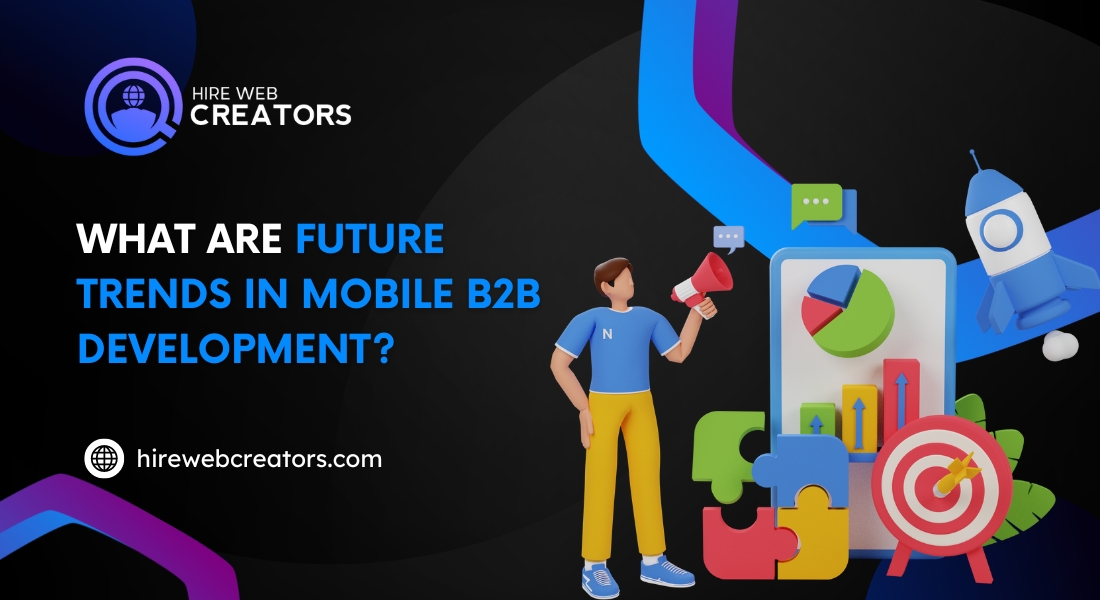
One significant trend is the rise of artificial intelligence (AI) and machine learning in mobile applications. These technologies allow businesses to provide personalized experiences based on user behavior and preferences. By leveraging AI in B2B Web Development, companies can analyze data to offer tailored content, recommendations, and support, enhancing user satisfaction and increasing conversion rates. This trend underscores the importance of data-driven decision-making in developing an effective mobile-first B2B strategy.
Another emerging trend is the continued growth of voice search and voice-activated technologies. As more users turn to voice assistants like Siri and Alexa for information, optimizing content for voice search is becoming increasingly important. Implementing a mobile-first B2B strategy requires businesses to consider how users engage with voice search and adapt their content to meet these changing behaviors.
Key future trends to watch include:
- Augmented Reality (AR): AR technologies are being integrated into mobile applications to create immersive experiences that enhance user engagement and product visualization.
- 5G Technology: The rollout of 5G networks will significantly improve mobile connectivity, enabling faster load times and enhanced app performance. Businesses should prepare for the increased capabilities that 5G offers.
- Increased Focus on Security: As mobile transactions grow, so does the need for robust security measures. Ensuring data protection and user privacy will be a critical focus for businesses adopting mobile-first B2B strategies.
In conclusion, adopting a mobile-first B2B strategy is not merely a trend but a necessity for businesses seeking to thrive in today’s digital landscape. As more users rely on mobile devices for their information and purchasing decisions, companies must prioritize mobile optimization to enhance user experiences. By leveraging responsive design, integrating mobile marketing tactics, and employing the right technologies, businesses can create engaging and efficient mobile interactions that meet their audience’s expectations—embracing a mobile-first B2B strategy positions organizations to stay competitive and relevant in an ever-evolving marketplace.
Continuous evaluation and adaptation of mobile-first B2B strategies will ensure that businesses remain responsive to changing consumer needs and technological advancements. By focusing on the core elements of a mobile-first B2B strategy, companies can cultivate lasting relationships with their customers and drive sustainable growth. strategies will be essential for long-term success. Businesses should remain vigilant in monitoring industry trends and user behaviors, ensuring their mobile-first initiatives align with emerging technologies and consumer preferences. A well-executed mobile-first strategy will ultimately lead to increased engagement, improved conversion rates, and enhanced overall business performance.
